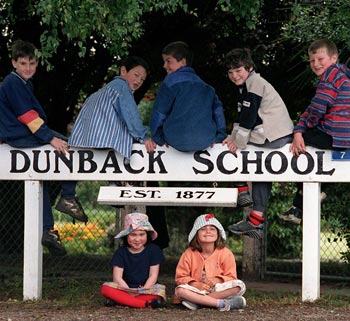Story summary
From the 1840s, New Zealand was settled by British and other immigrants, many of whom could not read or write. There was no law saying children had to go to school, and education was not free – only wealthier people could afford it. Many people lived in the country and there were few schools nearby.
Māori education
Christian missionaries taught some Māori to read and write English. Before 1877, Māori children could attend Native Schools. This system lasted until the 1960s.
Education Act 1877
This was an important law. All children received free primary education, and they had to attend school.
Country life
Country schools often had only one or two classrooms, with one or two teachers. Most students left at age 12 in the 19th and early 20th centuries, but some attended district high schools. Children from wealthier families boarded at town high schools, which usually offered a better education.
Children often walked to school, or rode horses. But they often missed classes in winter when the roads were flooded or muddy. Children also stayed home to help with milking cows, haymaking and other tasks.
Improvements
Some farm children lived too far away from a school. Since 1922 the Correspondence School has provided lessons for children in remote areas – by mail and on the radio, and now on the internet.
Over the years there have been changes in rural education, including more secondary schools, school buses, a library service, and computers and interactive lessons. Pet day has always been a popular school event – pupils bring lambs, calves and other animals.
Fewer country schools
The number of country schools has been dropping since the late 1920s. Many schools have closed, and by 2006 only about 8% of all New Zealand pupils were at rural schools.
Pros and cons of country schools
Country schools are small and isolated. Drawbacks include:
- pupils have few classmates
- there are only one or two teachers
- there are no big libraries, museums or other facilities nearby.
Good points include:
- pupils of all ages mix together
- pupils are more self-reliant than in cities
- teachers can give pupils more attention
- there are close links with the community.





